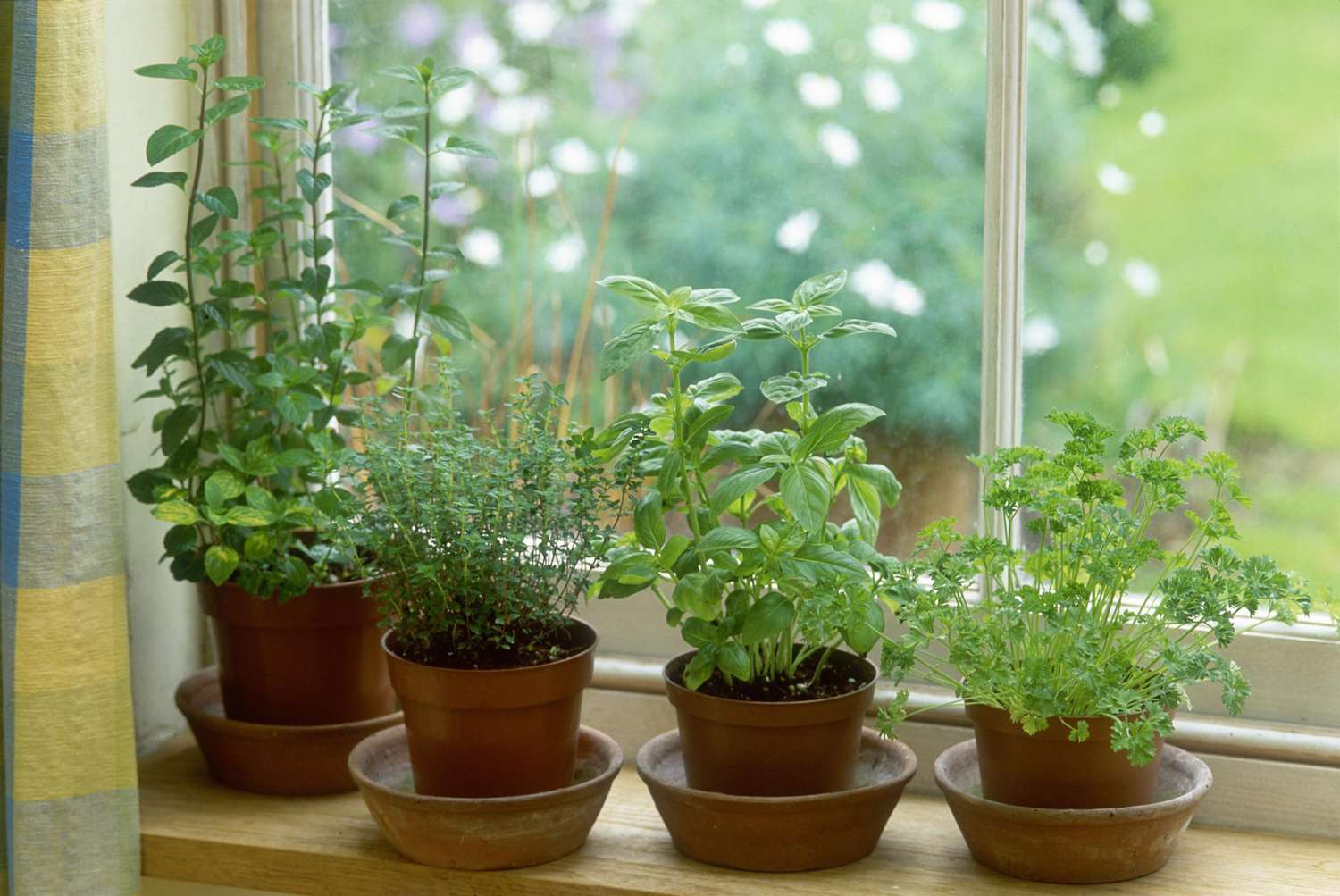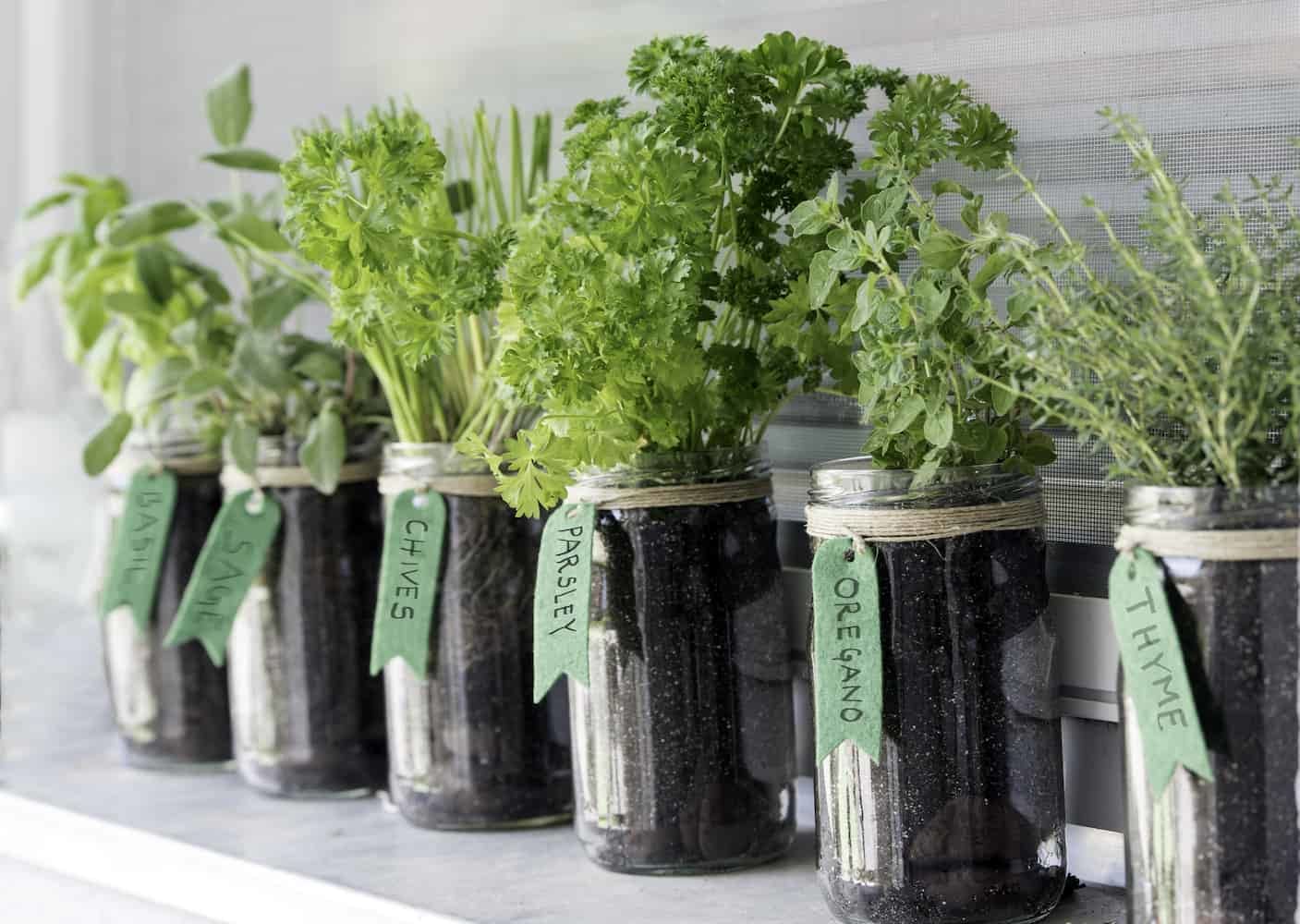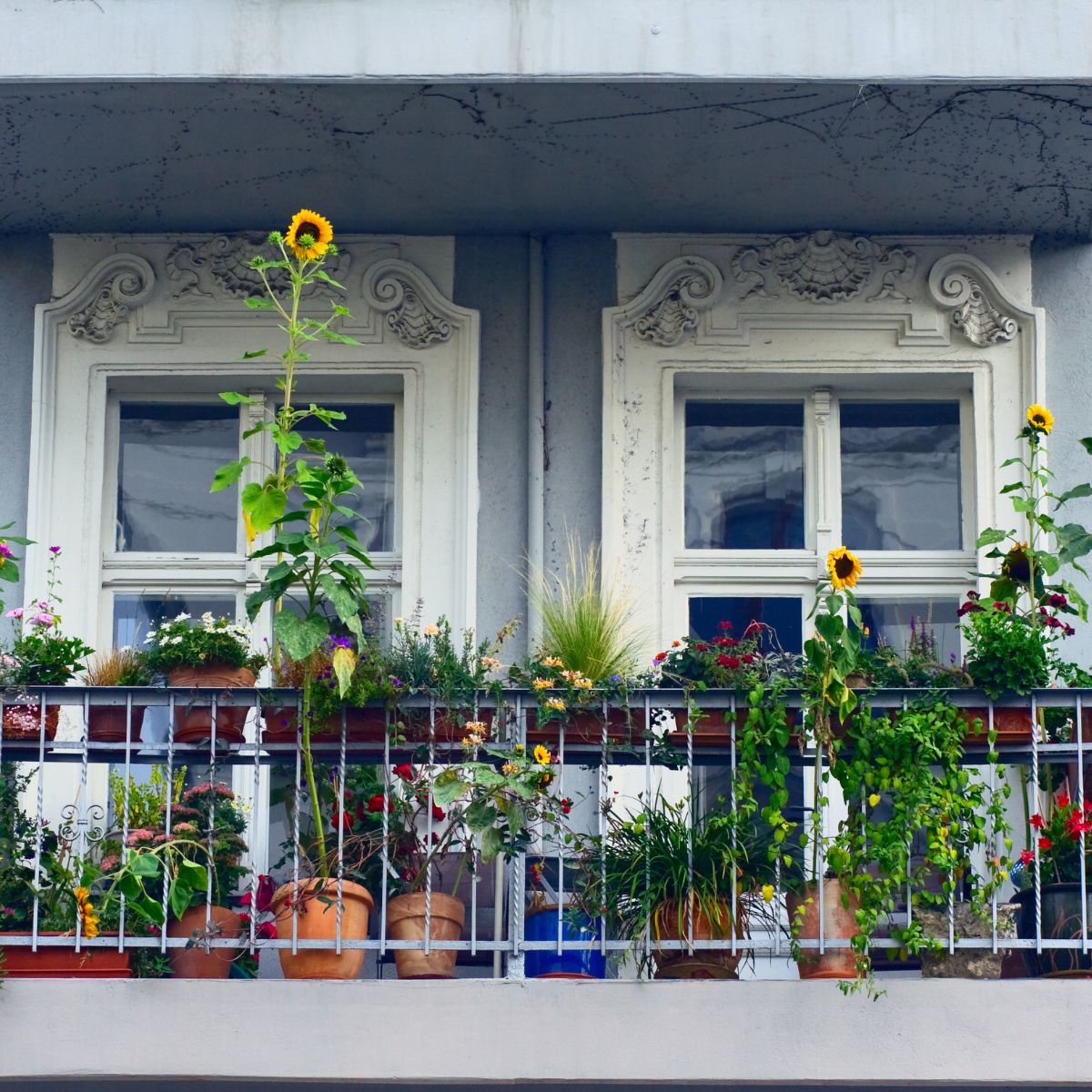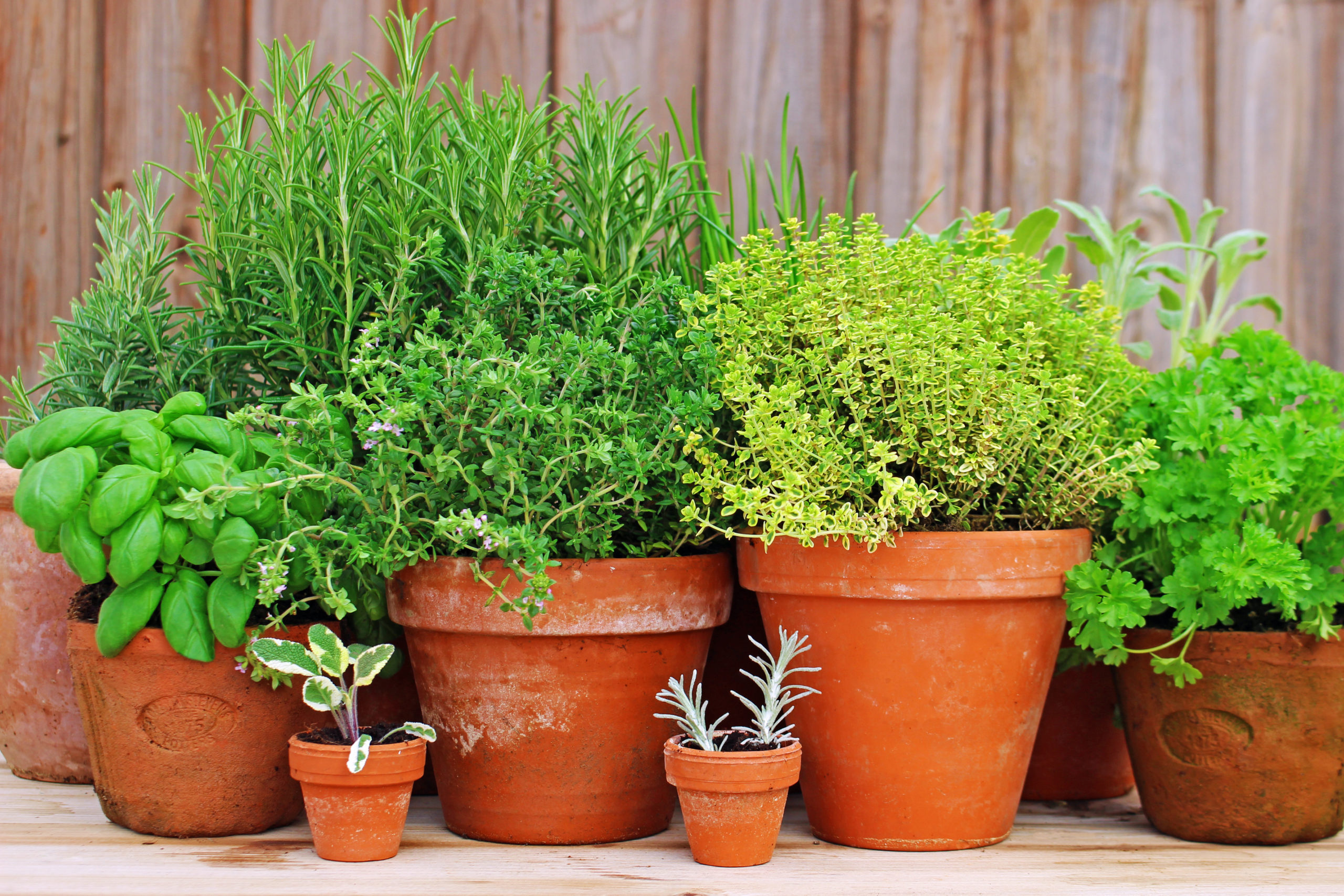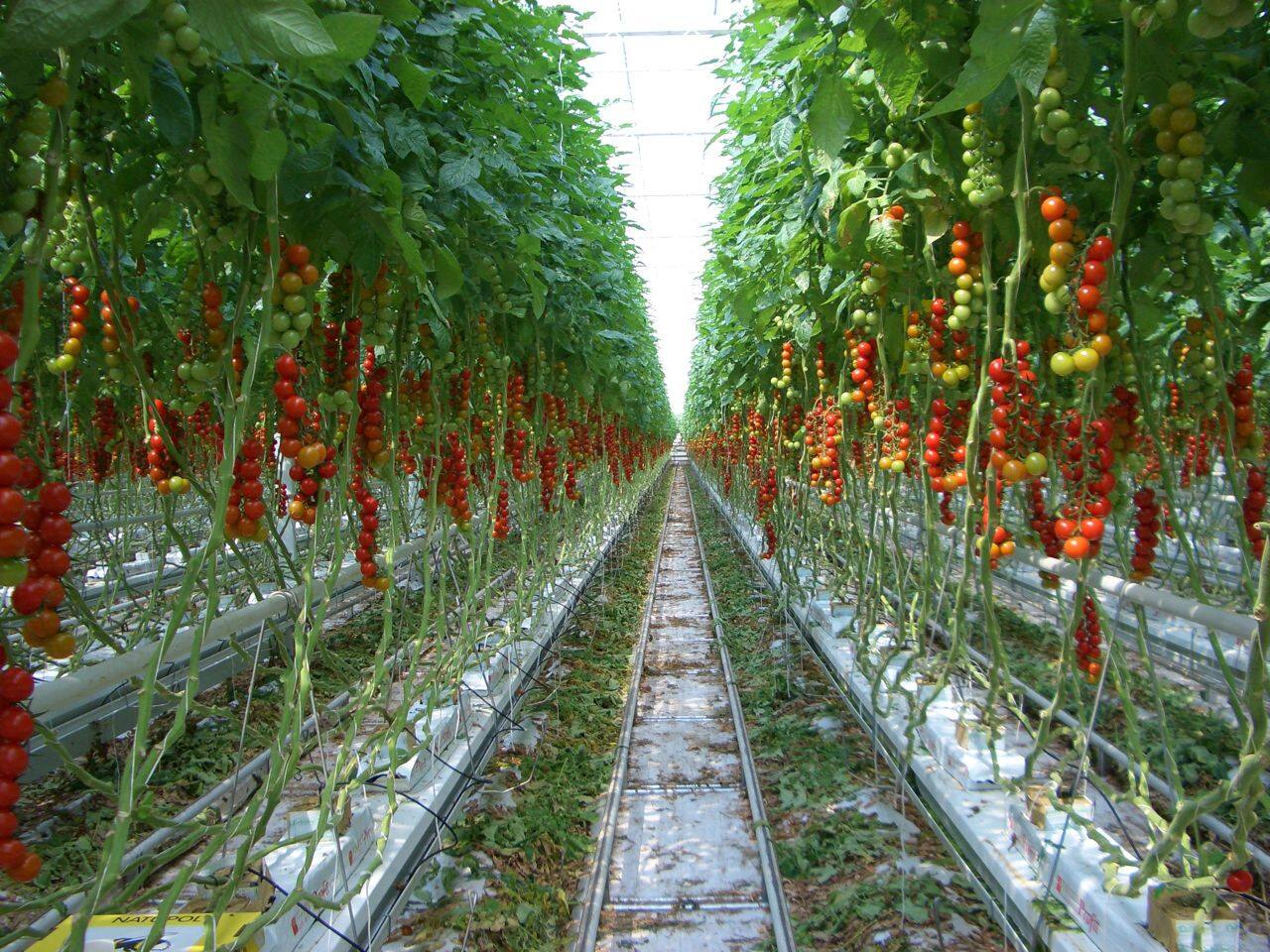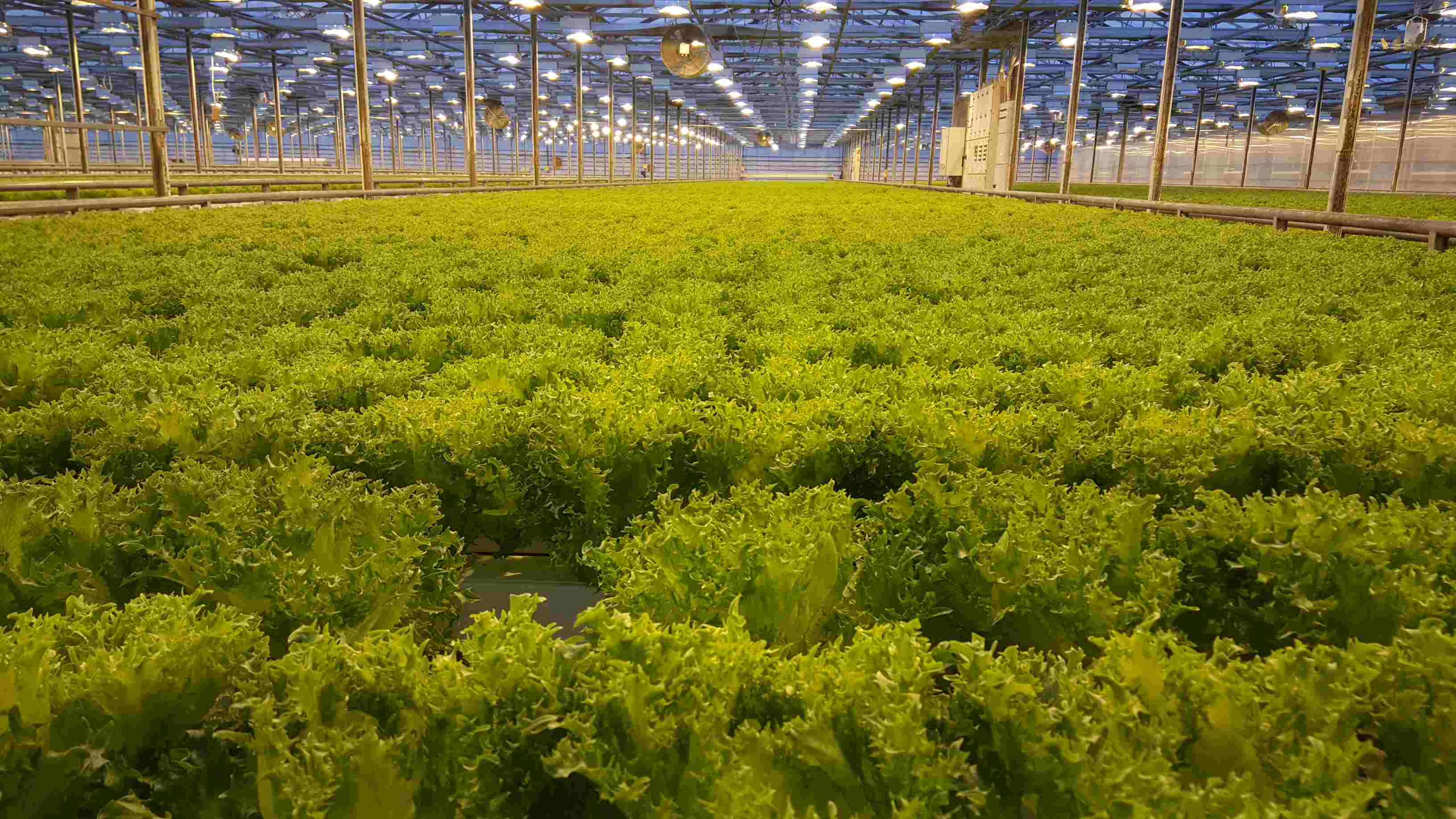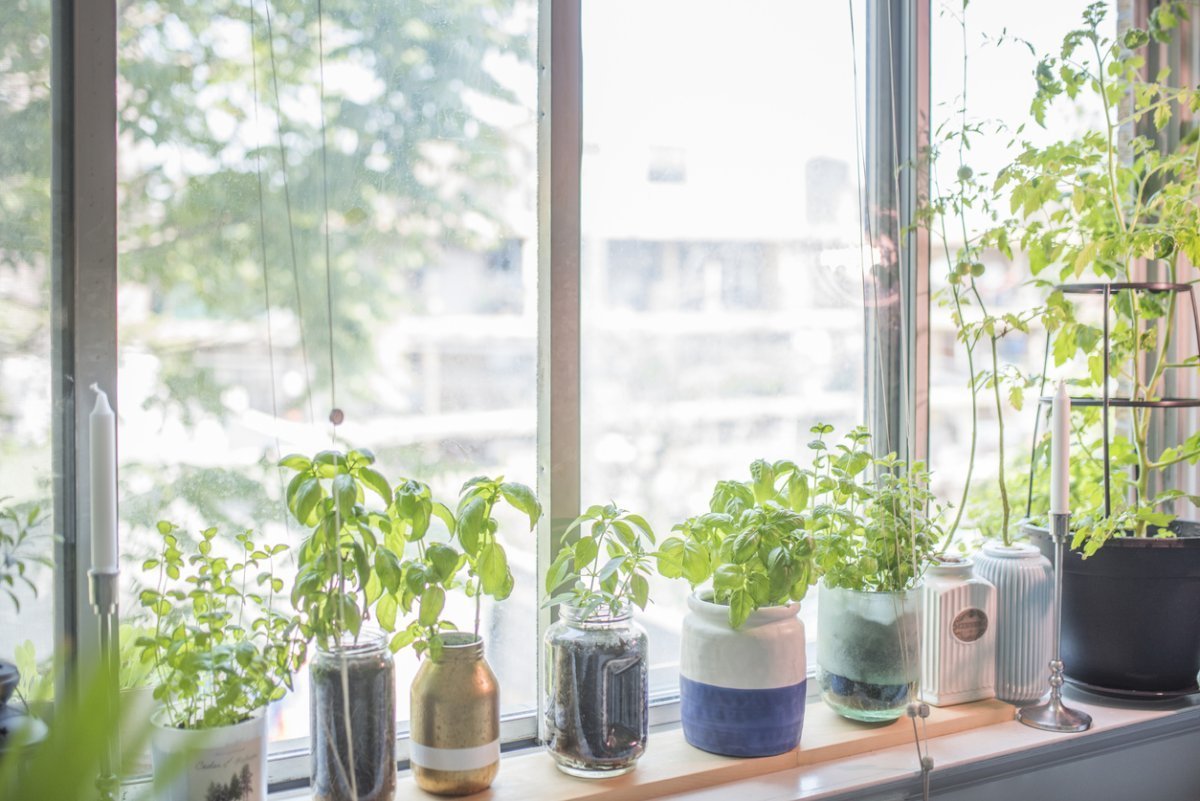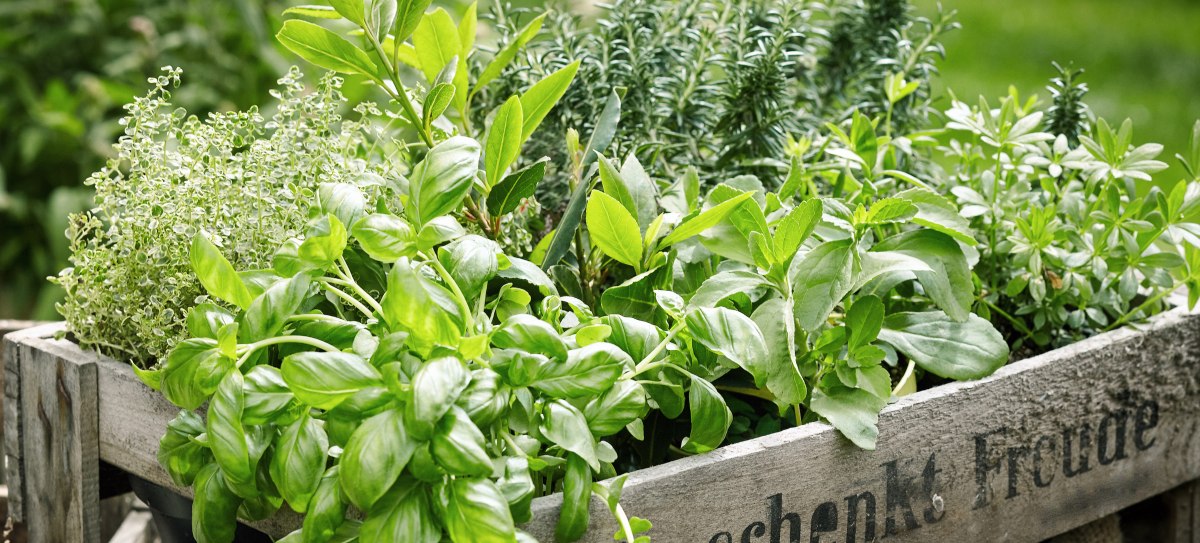Home>Types of Gardening>Container Gardening>How To Grow Hydroponic Herbs
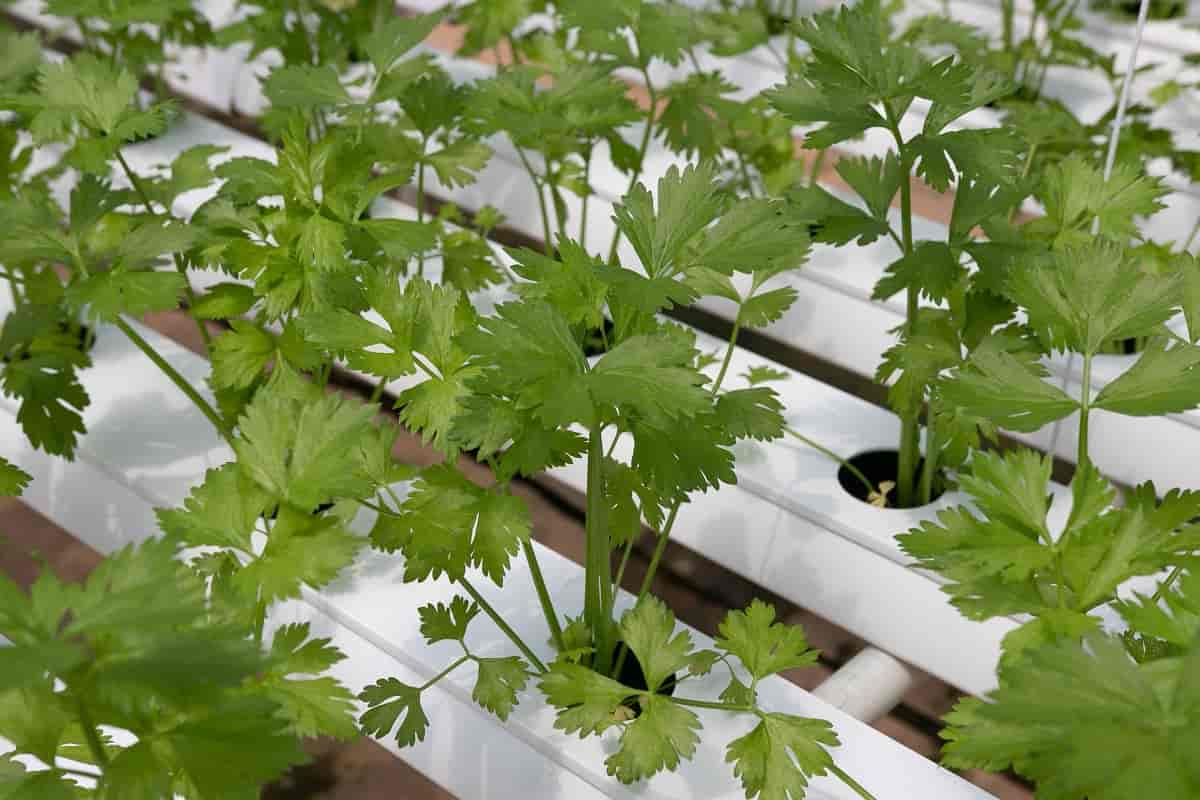

Container Gardening
How To Grow Hydroponic Herbs
Modified: January 22, 2024
Learn the art of container gardening to grow your favorite hydroponic herbs. Discover the secrets to successful herb cultivation using innovative hydroponic techniques.
(Many of the links in this article redirect to a specific reviewed product. Your purchase of these products through affiliate links helps to generate commission for Chicagolandgardening.com, at no extra cost. Learn more)
Table of Contents
- Introduction
- Benefits of Growing Hydroponic Herbs
- Choosing the Right Herbs for Hydroponic Cultivation
- Setting Up a Hydroponic Herb Garden
- Nutrient Solutions for Hydroponic Herb Growth
- Lighting and Temperature Requirements for Hydroponic Herbs
- Watering and pH Maintenance in Hydroponic Herb Cultivation
- Pruning and Harvesting Hydroponic Herbs
- Troubleshooting Common Issues in Hydroponic Herb Gardens
- Conclusion
Introduction
Welcome to the world of hydroponic herb gardening! This innovative method of cultivation allows you to grow herbs without the need for soil. Instead, plants are grown in a water-based nutrient solution, providing them with everything they need to thrive. Whether you have limited outdoor space, want to grow herbs year-round, or simply enjoy the convenience of indoor gardening, hydroponic herb gardening is a fantastic option.
Hydroponic gardening has gained popularity in recent years due to its numerous benefits. Not only does it offer higher yields and faster growth compared to traditional soil gardening, but it also allows you to have greater control over the environment in which your herbs grow. Plus, by eliminating the use of soil, you can bypass common issues such as pests, diseases, and weeds.
In this comprehensive guide, we’ll walk you through everything you need to know to successfully grow herbs using hydroponics. From choosing the right herbs to setting up your hydroponic garden and maintaining optimal conditions, we’ve got you covered. So, let’s dive in and discover the exciting world of hydroponic herb gardening!
Benefits of Growing Hydroponic Herbs
Growing herbs using hydroponics comes with a multitude of benefits that make it an attractive option for both experienced gardeners and beginners alike.
1. Space Efficiency: One of the biggest advantages of hydroponic herb gardening is that it requires minimal space. Unlike traditional soil gardens, hydroponic systems can be set up vertically, allowing you to maximize your growing area. This makes it ideal for those living in apartments or urban environments with limited outdoor space.
2. Year-round Harvest: With hydroponics, you can grow herbs all year round, regardless of the season. By creating an indoor hydroponic garden, you can simulate ideal growing conditions, providing your herbs with the necessary light, temperature, and nutrients. Say goodbye to waiting for spring and enjoy fresh herbs whenever you desire.
3. Faster Growth and Higher Yields: Hydroponic systems provide an optimal environment for herbs to grow. The controlled conditions ensure that plants receive the right amount of nutrients, water, and light, allowing them to thrive. As a result, hydroponic herbs tend to grow faster and produce higher yields compared to their soil-grown counterparts.
4. Water Efficiency: Hydroponic herb gardening is incredibly water-efficient. The recirculating system used in hydroponics minimizes water wastage, as the nutrient solution is continuously circulated and reused. This is particularly beneficial in regions experiencing water scarcity or for those looking to reduce their water consumption.
5. No Soil-Related Issues: By eliminating soil from the equation, hydroponic herb gardens are less prone to pests, diseases, and weeds. Soil-borne diseases and pests that can harm traditional herbs are less likely to affect hydroponically grown plants. This means less time spent on pest control and plant maintenance, and more time enjoying your flourishing herb garden.
6. Control over Nutrient Levels: With hydroponics, you have complete control over the nutrient levels your herbs receive. By customizing and adjusting the nutrient solution, you can ensure that your plants have optimal nutrition for their growth. This ability to fine-tune the nutrient levels can result in healthier plants and better-tasting herbs.
These are just a few of the many benefits that come with growing hydroponic herbs. From saving space and water to enjoying year-round harvests and better control over growing conditions, hydroponic gardening opens up a world of possibilities for herb enthusiasts.
Choosing the Right Herbs for Hydroponic Cultivation
When it comes to selecting herbs for hydroponic cultivation, it’s important to choose varieties that are well-suited to this growing method. While many herbs can thrive in a hydroponic system, some are particularly well-adapted to the controlled environment. Here are a few popular choices:
1. Basil: Basil is a staple herb in many kitchens and it happens to be an excellent choice for hydroponic gardening. With its fast growth rate and ability to adapt to different growing conditions, basil thrives in hydroponic systems. Plus, it comes in a variety of flavors and fragrances, such as sweet basil, Thai basil, and lemon basil, allowing you to enjoy a diverse range of options.
2. Mint: Mint is another herb that does well in hydroponic setups. With their vigorous growth and aromatic leaves, mint varieties like spearmint and peppermint are a great addition to any hydroponic herb garden. Just be mindful of their spreading nature, as they can take over if not properly contained.
3. Chives: Chives are a versatile herb that adds a mild onion-like flavor to dishes. They are relatively easy to grow in hydroponics due to their compact size. Regular harvesting of the leaves keeps the plant bushy and promotes continuous growth.
4. Parsley: Parsley is a popular herb used for both culinary and garnishing purposes. It grows well in hydroponic systems and can withstand varying growing conditions. With curled and flat-leaf varieties available, you can choose the type that suits your preferences.
5. Thyme: Known for its distinct flavor and aroma, thyme is an excellent choice for hydroponic cultivation. This herb is relatively low-maintenance and can tolerate drier growing conditions. It adds a savory touch to soups, stews, and roasted dishes.
6. Oregano: Oregano is a flavorful herb commonly used in Mediterranean cuisine. It grows well in hydroponic systems and can tolerate moderate to low light conditions. From classic oregano to Italian and Greek varieties, you have plenty of options to choose from.
7. Rosemary: Rosemary is a hardy herb that thrives in well-draining systems, making it suitable for hydroponic cultivation. Its woody stems and fragrant leaves are perfect for seasoning roasted meats and vegetables.
These are just a few examples of herbs that can be successfully grown in hydroponics. However, don’t limit yourself to just these options. Experiment with different herbs to find the ones that suit your taste preferences and growing conditions. Remember to consider factors such as growth rate, space requirements, and light preferences when selecting herbs for your hydroponic garden.
Setting Up a Hydroponic Herb Garden
Setting up a hydroponic herb garden may seem intimidating at first, but with the right guidance, it can be a straightforward process. Here are the key steps to get you started:
1. Select a Suitable Hydroponic System: There are several types of hydroponic systems to choose from, such as nutrient film technique (NFT), deep water culture (DWC), and aeroponics. Each has its own advantages and considerations. Consider factors such as space availability, cost, level of maintenance, and personal preferences when deciding on a system.
2. Choose a Growing Medium: While hydroponic systems don’t require soil, a growing medium is needed to provide support and stability to the plants’ roots. Popular options include perlite, coconut coir, and Rockwool cubes. Select a medium that is suitable for your chosen hydroponic system and easy to work with.
3. Prepare the Nutrient Solution: Hydroponic plants rely on a nutrient-rich solution for their growth. Follow the manufacturer’s instructions to prepare the nutrient solution and ensure the correct balance of essential elements. Monitor and adjust the nutrient solution regularly to maintain optimal levels for your herbs.
4. Set Up Lighting: Adequate lighting is crucial for the success of your hydroponic herb garden, especially if you’re growing indoors. Depending on the type of herbs you’re cultivating, you may need specific types of grow lights, such as fluorescent, LED, or high-intensity discharge (HID) lights. Position the lights at the correct distance from the plants to provide the required intensity and duration of light.
5. Control Environmental Factors: Maintain ideal temperature and humidity levels within your hydroponic garden. Most herbs prefer temperatures between 60°F to 70°F (15°C to 21°C). Keep a close eye on ventilation and air circulation, as proper airflow helps prevent the growth of pests and diseases.
6. Plant and Maintain your Herbs: Once your hydroponic system is set up, it’s time to plant your chosen herbs. Ensure that the pH levels of the nutrient solution are within the recommended range for your specific herbs. Regularly monitor and adjust the pH, as well as water and nutrient levels, to keep your herbs healthy and thriving.
7. Harvest and Enjoy: As your herbs grow, it’s important to harvest them at the right time to encourage continuous growth. Pinch or cut off leaves as needed, being careful not to damage the plants. Enjoy the freshness and flavors of your hydroponically grown herbs in your culinary adventures.
Setting up a hydroponic herb garden requires a bit of initial effort, but once established, it can provide you with a bountiful and convenient source of fresh herbs throughout the year.
Nutrient Solutions for Hydroponic Herb Growth
In hydroponic gardening, plants rely on nutrient-rich solutions as their primary source of essential elements and minerals. Creating the correct nutrient solution is crucial for the healthy growth of your hydroponic herbs. Here are some key considerations for formulating and maintaining nutrient solutions:
1. Essential Nutrients: Nutrient solutions should contain a balanced combination of essential elements required for plant growth. These include macro-nutrients such as nitrogen (N), phosphorus (P), and potassium (K), as well as secondary nutrients like calcium (Ca), magnesium (Mg), and sulfur (S). Additionally, micronutrients like iron (Fe), zinc (Zn), and manganese (Mn) are also important for healthy herb growth.
2. Pre-Made vs. DIY Formulations: You have the option to either purchase pre-made hydroponic nutrient solutions or create your own DIY formulations. Pre-made solutions are convenient and readily available, while DIY formulations allow you to customize the nutrient solution based on the specific needs of your herbs.
3. pH Balance: Maintaining the appropriate pH level is vital for nutrient uptake and optimal herb growth. Most herbs prefer a slightly acidic pH level between 5.5 to 6.5. Regularly monitor and adjust the pH of your nutrient solution using pH testing kits or digital pH meters.
4. Nutrient Strength: The strength or concentration of your nutrient solution is measured in electrical conductivity (EC) or parts per million (ppm). Follow the instructions provided with your nutrient solution or consult specific herb cultivation guides for the recommended nutrient strength. Monitor the EC or ppm levels regularly to ensure your herbs are receiving the appropriate amount of nutrients.
5. Nutrient Solution Changes: Over time, nutrient solutions can become depleted or imbalanced, which can affect the growth and health of your herbs. It’s important to monitor your nutrient solution regularly and change it out at appropriate intervals. This ensures that your herbs have access to fresh and properly balanced nutrients.
6. Supplementing with Additives: In addition to the essential nutrients, you may choose to supplement your nutrient solution with additives. Examples include root stimulators, plant growth regulators, and bloom boosters. However, be cautious when using additives and follow the instructions carefully to avoid overfeeding or damaging your herbs.
7. Monitoring and Adjusting: Keep a close eye on your hydroponic herb plants and observe their growth and health. Monitor the color and appearance of the leaves, as well as any signs of nutrient deficiencies or imbalances. Adjust the nutrient solution accordingly by increasing or decreasing the nutrient strength or altering the nutrient ratio to meet the specific needs of your herbs.
Properly formulated and balanced nutrient solutions are vital for the success of your hydroponic herb garden. Regular monitoring, adjustment, and a keen eye for the needs of your herbs will help ensure they receive the optimal nutrition for healthy and abundant growth.
Lighting and Temperature Requirements for Hydroponic Herbs
Providing adequate lighting and maintaining appropriate temperature levels are essential factors for the successful growth of hydroponic herbs. By understanding the lighting and temperature requirements of your herbs, you can create the optimal growing conditions for them. Here are some key considerations:
Lighting:
Proper lighting is crucial for photosynthesis, the process by which plants convert light energy into chemical energy, resulting in their growth. Different herbs have varying light requirements, but most herbs require around 12-16 hours of light per day for optimal growth.
When it comes to lighting options for hydroponic herb gardens, there are several choices:
- Fluorescent Lights: These lights are affordable, energy-efficient, and emit a wider spectrum of light suitable for herb growth. They work well for small-scale indoor herb gardens.
- LED Lights: LED lights are increasingly popular for hydroponic herb gardens due to their energy efficiency and customizable light spectrums. They provide specific wavelengths that target the needs of plants during different growth stages.
- HID Lights: High-intensity discharge (HID) lights, such as metal halide (MH) and high-pressure sodium (HPS) lights, are suitable for larger-scale hydroponic setups. They emit intense light, providing ample brightness for robust plant growth. However, they generate more heat and require proper ventilation.
When positioning your lights, ensure they are placed at the appropriate distance from the plants to provide sufficient intensity without causing heat stress or light burn. As your herbs grow, you may need to adjust the height of the lights to maintain the optimal distance.
Temperature:
Temperature plays a vital role in the growth and development of hydroponic herbs. While specific temperature requirements may vary among different herb varieties, a general temperature range of 60°F to 70°F (15°C to 21°C) is suitable for most herbs.
Here are a few additional considerations regarding temperature:
- Avoid Extreme Temperatures: Ensure that the temperature in your hydroponic garden does not exceed 85°F (29°C) or drop below 50°F (10°C), as this can negatively impact herb growth. Extreme heat can lead to wilting and heat stress, while extreme cold can slow down growth and even cause damage.
- Proper Ventilation: Maintaining proper air circulation in your hydroponic garden helps regulate temperature and prevent the buildup of excessive humidity. Use fans or exhaust systems to ensure fresh air exchange and prevent the growth of mold or fungus.
- Consider Day-Night Temperature Differences: Many herbs benefit from slight temperature differences between day and night. Aim for a 10-15°F (5-8°C) drop in temperature during the nighttime to mimic natural outdoor conditions.
By providing the correct lighting and maintaining optimal temperature conditions, you can ensure the healthy growth and development of your hydroponic herbs. Remember to consider the specific lighting and temperature requirements of each herb variety to create the best environment for their success.
Watering and pH Maintenance in Hydroponic Herb Cultivation
Proper watering and pH maintenance are critical factors in ensuring the success of your hydroponic herb garden. A well-maintained water supply and a balanced pH level are essential for healthy plant growth. Here are some important considerations for watering and pH maintenance:
Watering:
Unlike traditional soil gardening, where overwatering can lead to root rot, hydroponic herb cultivation requires a different approach. In hydroponics, the roots are usually submerged in a nutrient-rich water solution, allowing for efficient uptake of water and nutrients. Here are some guidelines for watering your hydroponic herbs:
- Monitor Water Levels: Regularly check the water levels in your hydroponic system to ensure that the roots are consistently submerged in the nutrient solution. As plants grow, they may drink more water, so be prepared to top up the system as needed.
- Avoid Stagnant Water: Stagnant water can lead to a lack of oxygen and create an environment for harmful bacteria to thrive. Incorporate oxygenation methods, such as air stones or air pumps, to keep the water oxygenated and circulating.
- Maintain Moisture Levels: While hydroponics eliminates the risk of underwatering, it’s still important to maintain consistent moisture levels. Avoid allowing the roots to dry out completely, as this can cause stress and hinder the growth of your herbs. Monitor the moisture levels in your growing medium regularly and adjust watering accordingly.
- Prevent Waterborne Diseases: Regularly inspect your system for any signs of waterborne diseases, such as root rot. If you notice any symptoms, promptly address the issue by adjusting nutrient levels, improving oxygenation, or implementing appropriate treatments.
pH Maintenance:
Maintaining the correct pH level is crucial for nutrient availability and optimal herb growth. The pH scale ranges from 0 to 14, with 7.0 being neutral. Most hydroponic herbs prefer slightly acidic conditions with a pH range between 5.5 and 6.5. Here are some important considerations for pH maintenance:
- Monitor pH Levels: Regularly check the pH of your nutrient solution using pH testing kits or digital pH meters. This ensures that your herbs can effectively absorb the nutrients they require for growth.
- Adjust pH as Needed: If the pH drifts outside the desired range, take prompt action to bring it back to the appropriate level. Use pH up or pH down solutions to adjust the pH accordingly. Follow the manufacturer’s instructions and make gradual adjustments to avoid sudden pH swings.
- Consider Herb-Specific pH Requirements: Some herbs may have specific pH preferences. Research the pH preferences of the herbs you’re growing and aim to maintain the pH within their preferred range for optimal growth and nutrient uptake.
- Monitor Nutrient Uptake: An imbalance in pH can affect the availability of certain nutrients, leading to deficiencies or toxicity. Regularly observe your herbs for any signs of nutrient imbalances and adjust the pH as necessary.
Proper watering and pH maintenance are essential for the health and productivity of your hydroponic herb garden. By ensuring a consistent water supply and maintaining a balanced pH level, you can create an ideal environment for your herbs to thrive and flourish.
Pruning and Harvesting Hydroponic Herbs
Pruning and harvesting are important practices to ensure the growth and productivity of your hydroponic herbs. Proper pruning helps maintain plant shape, encourages bushier growth, and prevents overcrowding. Harvesting at the right time ensures that you enjoy the freshest flavors from your herbs. Here are some guidelines for pruning and harvesting hydroponic herbs:
Pruning:
- Remove Dead or Damaged Leaves: Regularly inspect your herb plants for any dead or damaged leaves. These can be a breeding ground for pests or diseases. Carefully prune these leaves using clean, sharp pruners or scissors.
- Promote Bushier Growth: To encourage bushier growth, pinch off the tips of your herbs when they reach a certain height. This technique, called “pinching,” redirects energy to promote lateral growth, resulting in fuller, more compact plants.
- Thin Out Overcrowded Plants: If plants become overcrowded and start competing for light and nutrients, it’s important to thin them out. Remove excess plants, ensuring enough space for each individual herb to grow and receive adequate light and nutrients.
- Prune Flowering Stems: Some herbs tend to produce flowering stems, which can affect the flavor and growth of the plant. Regularly prune these flowering stems to redirect energy towards leaf production, ensuring flavorsome herbs with a longer harvest window.
Harvesting:
- Timing is Key: Harvest your hydroponic herbs when they have reached the desired stage of growth. The exact timing will vary depending on the herb variety and its intended use, such as using younger and more tender leaves for milder flavors or waiting until maturity for stronger flavors.
- Harvest from the Top: When harvesting herbs, start by harvesting the topmost leaves first. This stimulates further growth from the lower portions of the plant. Avoid removing more than one-third of the plant at a time to ensure continued growth and productivity.
- Use Clean Tools: Always use clean, sharp pruners or scissors when harvesting your herbs. This helps prevent the spread of diseases and ensures clean cuts for the health of the plant.
- Proper Storage: After harvesting, properly store your herbs to maintain their freshness and flavor. Rinse the harvested herbs gently and pat them dry. Store them in an airtight container or use a herb preserver to extend their shelf life.
Regular pruning and harvesting not only keep your hydroponic herbs in optimal condition but also provide you with a continuous supply of fresh flavors for your culinary creations. Remember to handle your herbs with care during the pruning and harvesting process to avoid damage and promote healthy plant growth.
Troubleshooting Common Issues in Hydroponic Herb Gardens
While hydroponic herb gardening offers many advantages, it is not without its challenges. However, with a little bit of troubleshooting, you can overcome common issues and ensure the success of your hydroponic herb garden. Here are some common problems you may encounter and tips on how to address them:
1. Nutrient Deficiencies: If you notice yellowing leaves, stunted growth, or poor overall plant health, it may indicate nutrient deficiencies. Conduct a thorough assessment of your nutrient solution, checking the balance of essential elements. Adjust the nutrient strength and pH levels to ensure optimal nutrient availability to your herbs.
2. Nutrient Imbalances: Excessive nutrient levels can lead to nutrient imbalances and, in some cases, toxicity. If you observe burned leaf tips, leaf discoloration, or slow growth, it may be a sign of nutrient imbalances. Reduce the nutrient strength and flush the system with plain water to help restore balance.
3. pH Fluctuations: pH fluctuations can occur in hydroponic systems due to various factors, including changes in nutrient concentration and microbial activity. Monitor the pH levels regularly and make gradual adjustments using pH up or pH down solutions to maintain the desired pH range for your herbs.
4. Waterborne Diseases: Hydroponic systems are not immune to waterborne diseases such as root rot or pythium. Ensure proper oxygenation and circulation in the water to prevent the growth of harmful bacteria or fungi. If necessary, consider using beneficial bacteria or natural fungicides to control or prevent these diseases.
5. Pests and Insects: While hydroponic systems can minimize pest issues, occasional pest infestations can still occur. Inspect your plants regularly for signs of pests like aphids, spider mites, or whiteflies. Introduce natural predators like ladybugs or use organic insecticides to control the infestation.
6. Temperature and Humidity Management: Improper temperature and humidity levels can lead to plant stress or the growth of mold and fungus. Ensure adequate airflow and ventilation in your hydroponic garden to regulate temperature and humidity. Use fans or exhaust systems to maintain optimal conditions for your herbs.
7. Insufficient or Excessive Light: Light is a crucial factor in the growth of your herbs. Insufficient light can lead to leggy growth and weak plants, while excessive light can cause leaf burn. Assess the lighting setup and ensure that the intensity and duration of light are appropriate for your herb varieties. Adjust the distance between the lights and plants as needed.
When troubleshooting issues in your hydroponic herb garden, it’s important to observe your plants closely and take prompt action. Regular monitoring, adjusting nutrient levels, maintaining balanced pH, and addressing problems as they arise will help ensure the health and productivity of your hydroponic herbs.
Conclusion
Hydroponic herb gardening offers a unique and efficient way to grow your favorite herbs throughout the year. By understanding the benefits of hydroponics, choosing the right herbs, and setting up a suitable system, you can create an optimal environment for your herbs to thrive.
From providing the right nutrient solutions and maintaining proper lighting and temperature conditions to addressing common issues through pruning and troubleshooting, you have the tools to cultivate a successful hydroponic herb garden. The controlled environment of hydroponics allows for faster growth, higher yields, and a reduced risk of pests and diseases.
Remember to tailor your approach based on the specific needs of your herbs. Monitor the nutrient levels, pH balance, and water conditions to ensure healthy growth and optimal flavor. Regular pruning and harvesting will promote robust plant development and provide you with a continuous supply of fresh and fragrant herbs for your culinary creations.
Hydroponic herb gardening requires some initial effort and attention to detail, but the rewards are plentiful. Enjoy the convenience of fresh herbs at your fingertips, even in limited spaces or during colder seasons. Revel in the satisfaction of growing your own herbs and elevating your dishes with flavors that only freshly harvested herbs can provide.
So, take the plunge into the world of hydroponic herb gardening and experience the joy of cultivating your own thriving and flavorful herb garden.
